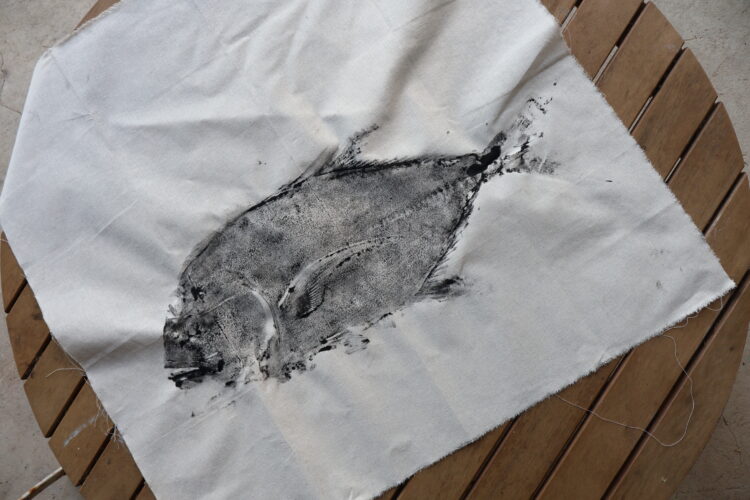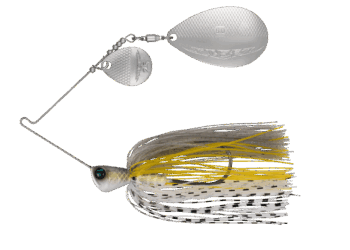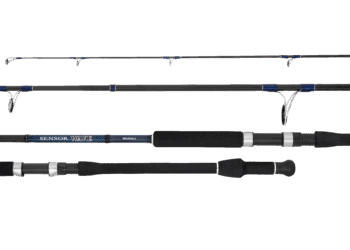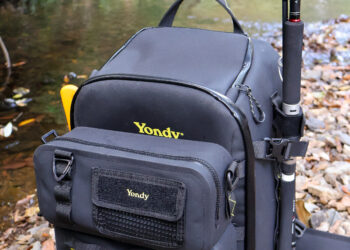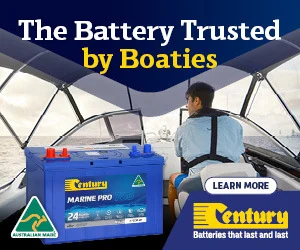By Hol and Joe is an Australian designed Gyotaku printing kit. Gyotaku refers to the ancient Japanese method of applying ink to a subject and printing it onto a medium. By Hol and Joe, uses food-safe and marine-safe ink to print on canvas.
The fish can be eaten after printing, which ensures minimal wastage. In fact, you are adding value to your already valued food source.
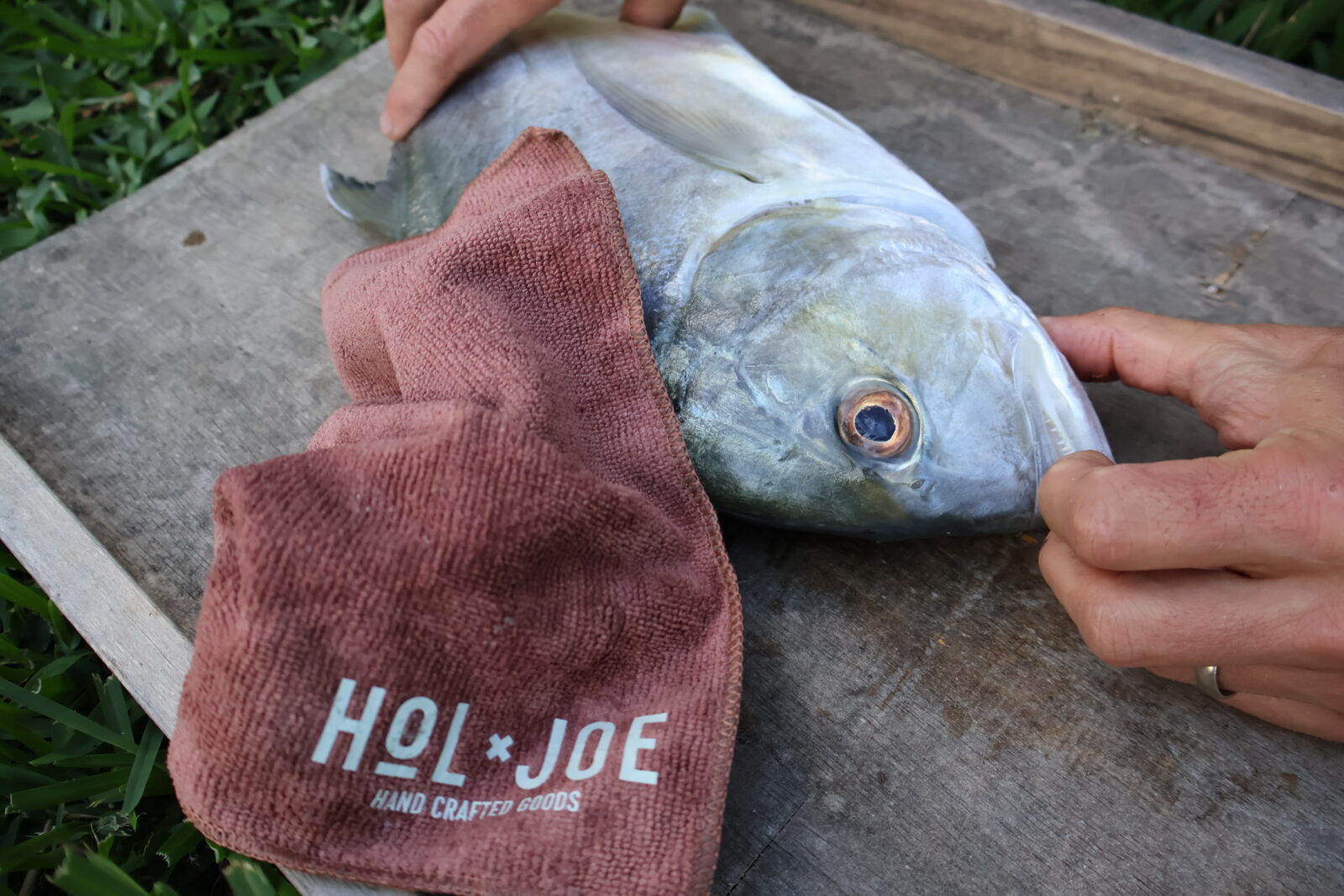
The printing kit is such a winner in my eyes because it is accessible to anyone who fishes or is keen to get involved. For experienced anglers, a rare capture or a PB might be worthy of a print to get an exact replica of the catch. Unlike taxidermy, Gyotaku allows the fish to be devoured once the artwork is completed with a modern-day day minimalistic appeal, artwork destined for the prime real estate of a dining room wall as opposed to the man cave.
For those who are on the periphery of fishing or tag along on expeditions, the Hol and Joe kit provides an easy means for people to incorporate different skill sets from fishing and cooking into the cycle of the day on the water. Creating a holistic and enjoyable experience for a range of people. At the core of the discussion is the fish, minute details that come alive with a black and white print, stories of the day’s fishing or culinary plans.

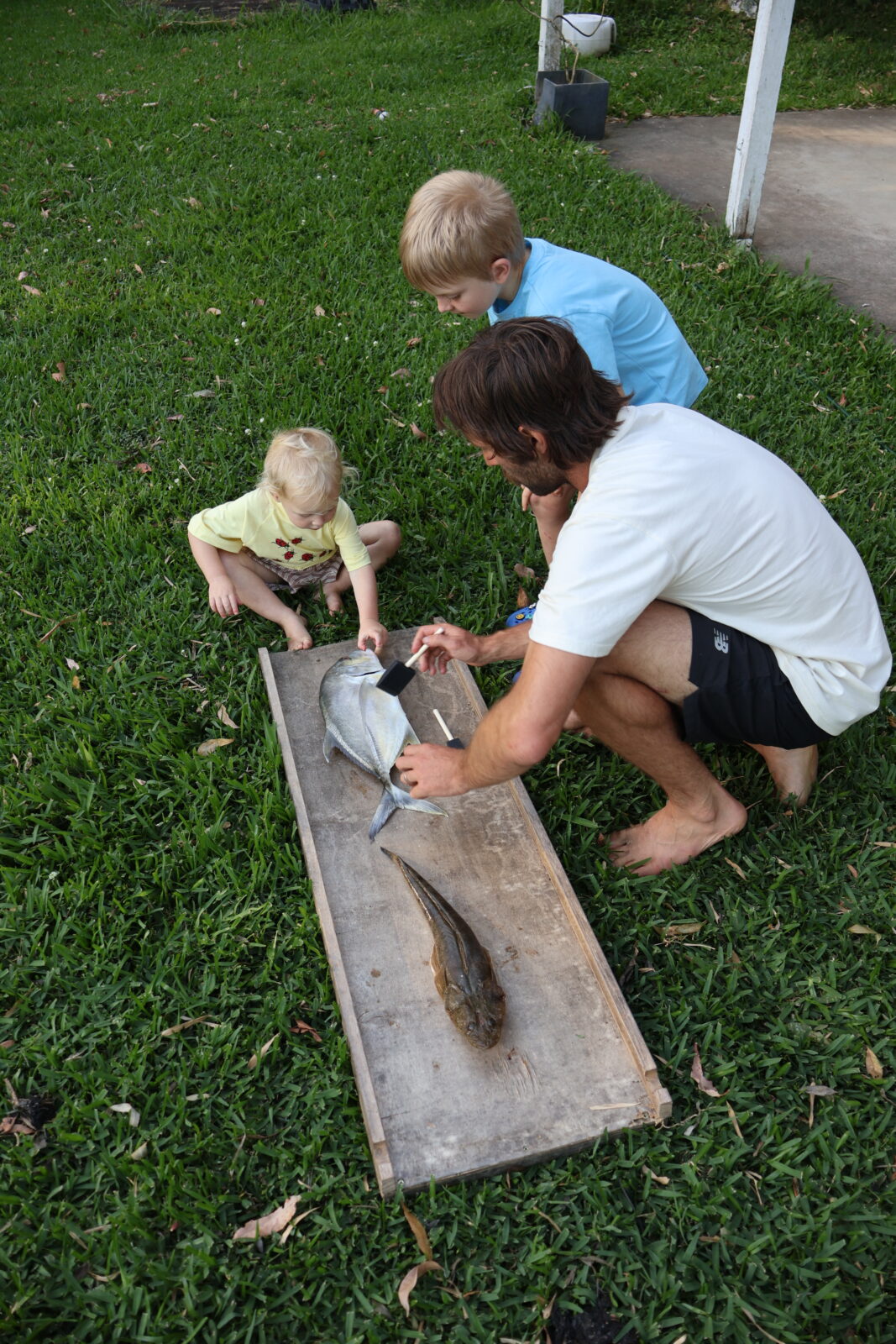
For me, I decided to make my first attempt with the By Hol and Joe kit to be with my 2.5-year-old son,Louie and good mate Jason O’Brien and his kid Henry. Jason and Henry caught the fish the day before, brain-spiked and bled the fish to optimise the edibility. I really wanted Henry to be involved; he is a young frother of a fisho, and he deserves his catch to be hanging proudly in his bedroom.
When we unboxed the kit, there are some key additions that truly make this a one-stop shop to get you started. A microfibre cloth is used to wipe down the fish, removing slime that could deteriorate the canvas over time. A small metal bowl for pouring the specialised ink into, and 2 different sized sponges to apply the ink. 2 large canvas cloths, which I decided to cut in half for our afternoon of printing. Also, a pen that matches the colour of the ink perfectly to add in details if you wish to take your art to the next level, perhaps the eyes. You could also write the name of the species, date of capture, who caught the fish and location to sign off on your art. The kit also includes some trendy stickers with a cool colour scheme, a recipe card, and a little information about Holly and Joe themselves.

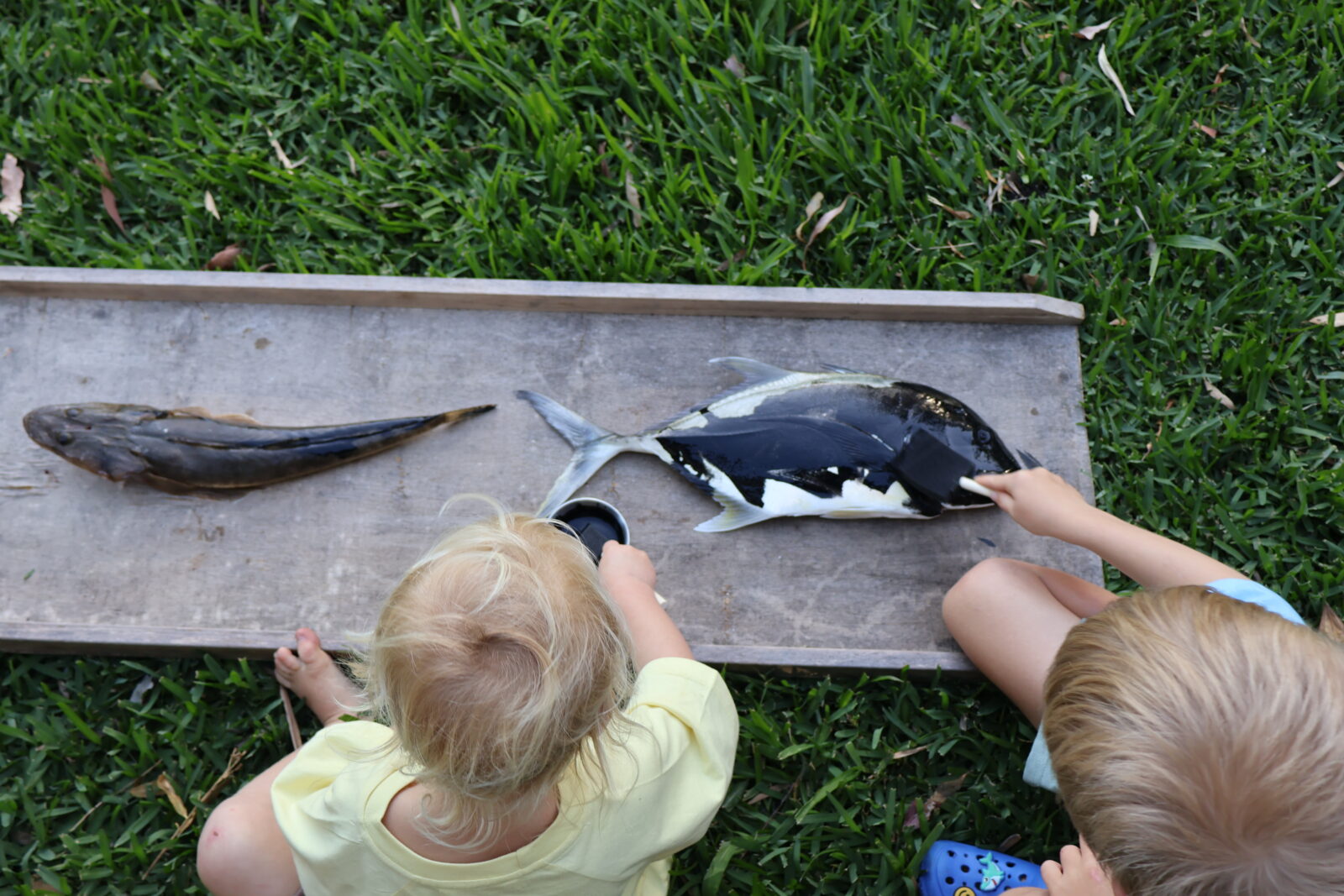
On a side note, I interviewed Holly and Joe on the “On The Sauce” podcast. It’s worth a listen, especially if you are interested in getting a kit. Listen here at Spotify or Apple.
I must say, getting Henry and Louie involved made the experience incredibly entertaining. The artwork may have suffered a greater number of imperfections. But they are all part of the story. Louie was amazed at the fish already and couldn’t stop grabbing them. He ended up pouring some of the ink onto the small GT, smearing his hands all over it, and then proceeded to hug me while wearing my beautiful new white shirt. It was all a part of the fun. The ink will wash out of the shirt, but the memory will stain, in a good way. We used the sponges to ensure that the coating was spread out evenly nd not too thick.
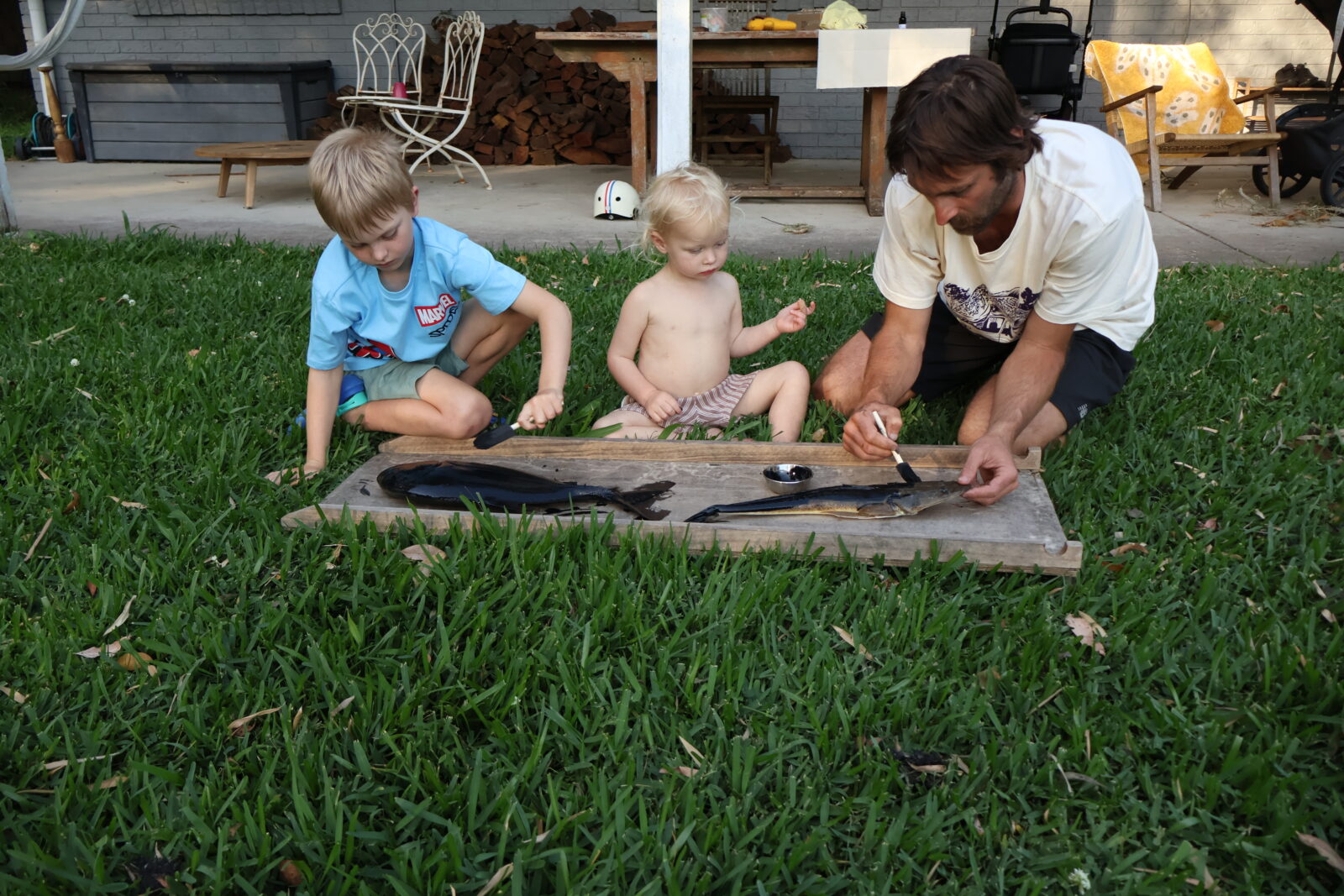
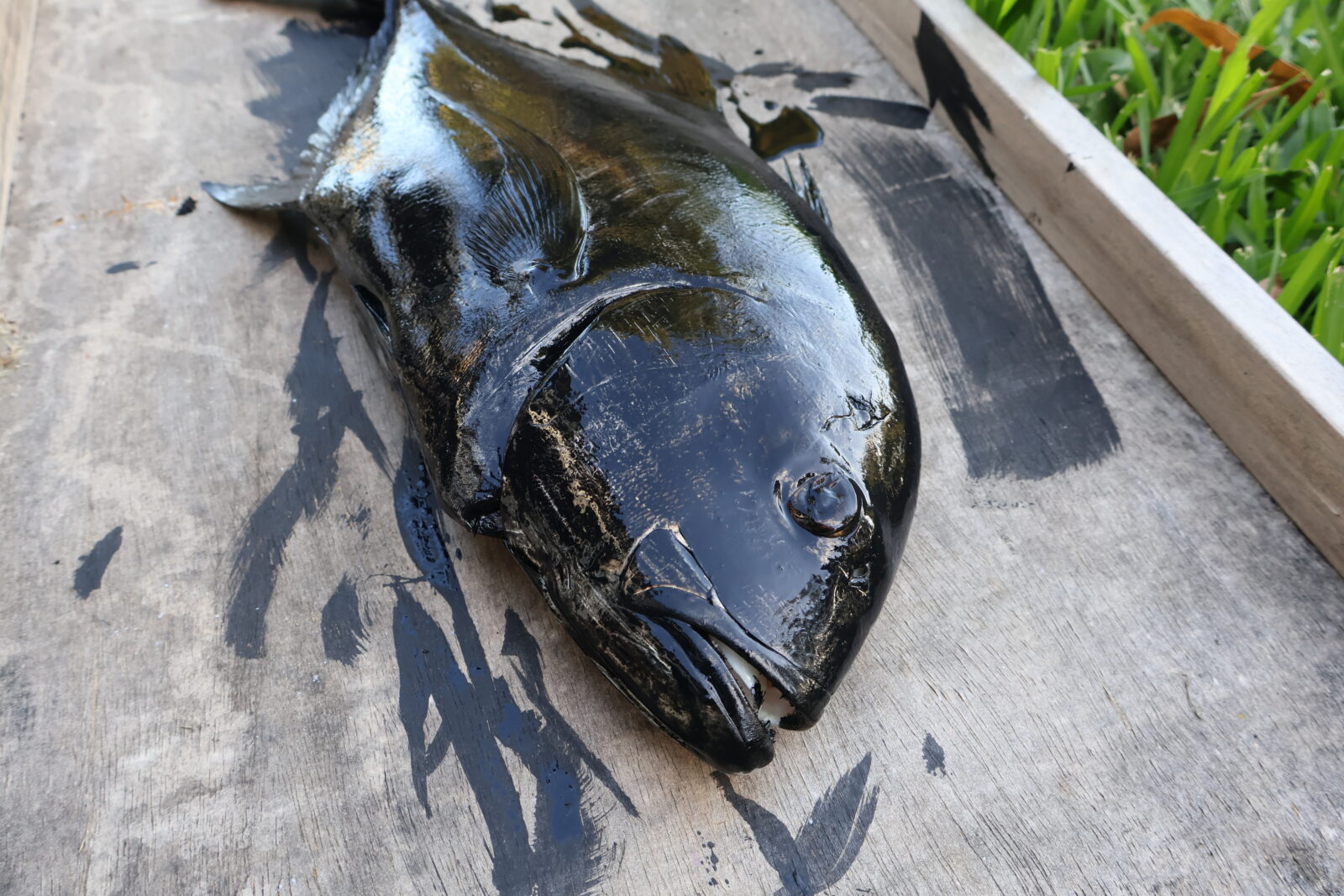
My advice is to iron out the creases of the fabric before printing. It will make the fabric easier to work with and create a cleaner image. Gently lay the fabric over the fish. Pressing over the surface of the fish without sliding the fabric. When it comes to the fins, splaying them out and folding them from underneath will improve the texture and key features of the fish; we didn’t quite nail this side of the print. But will next time.
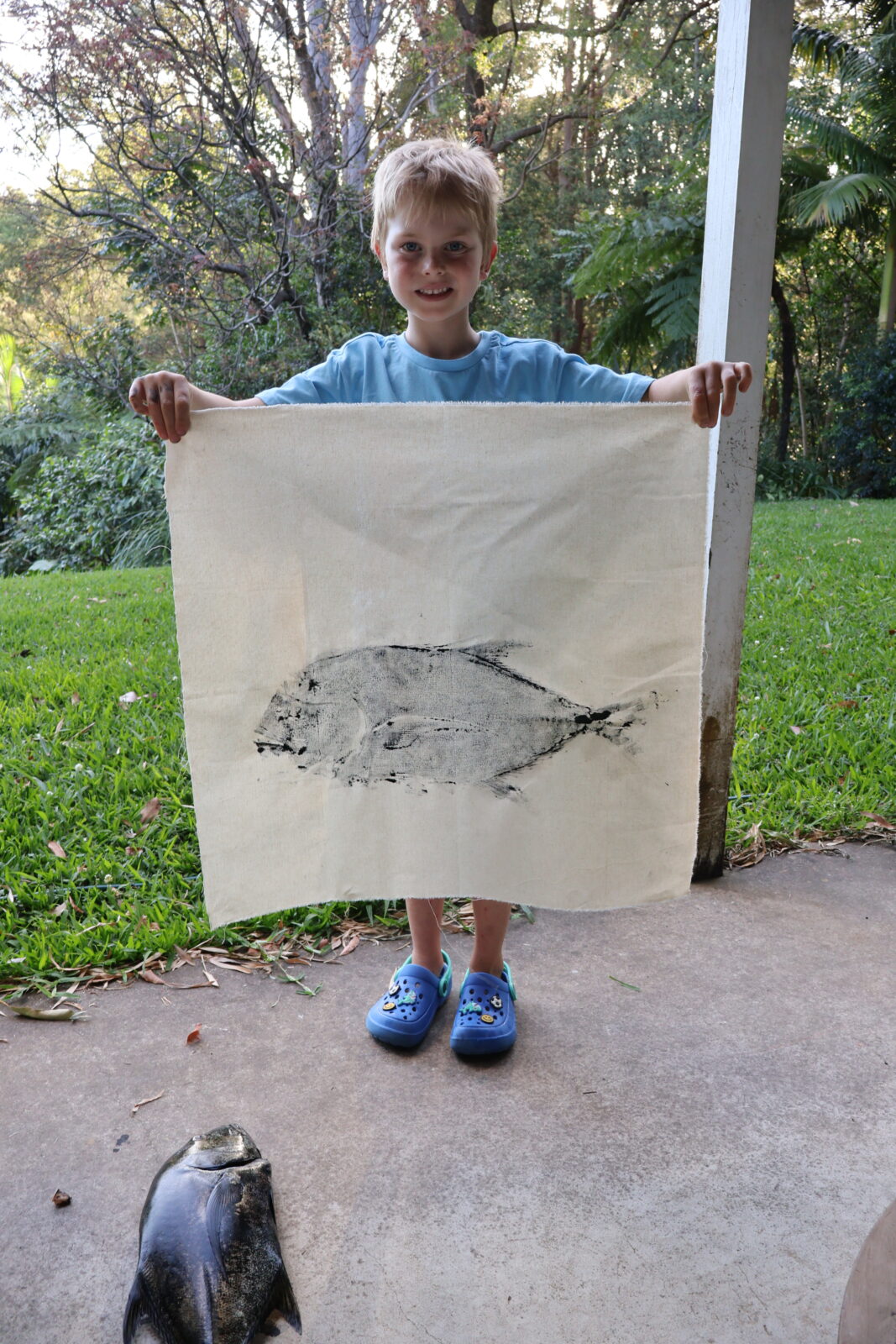
Our test models for the day were a small GT and a flathead. For our first prints, we were really happy with how they came out. It was a messy affair, but super fun. Henry will have his framed for prosperity. Once a print has been completed, if you are keen to go again, simply add some more ink and go again. Trial and error was the funnest part of this project.

Interestingly, this time of year on the mid north coast, there are an influx of GT’s busting up in our local estuaries. I really wanted to do a gyotaku print of a small GT. So it was the printing that introduced me to eating a species that is commonly overlooked and immensely abundant. I used this sustainable source of protein to make a ceviche; if people knew how good it tasted, they wouldn’t just be targeting them for a sports fish.

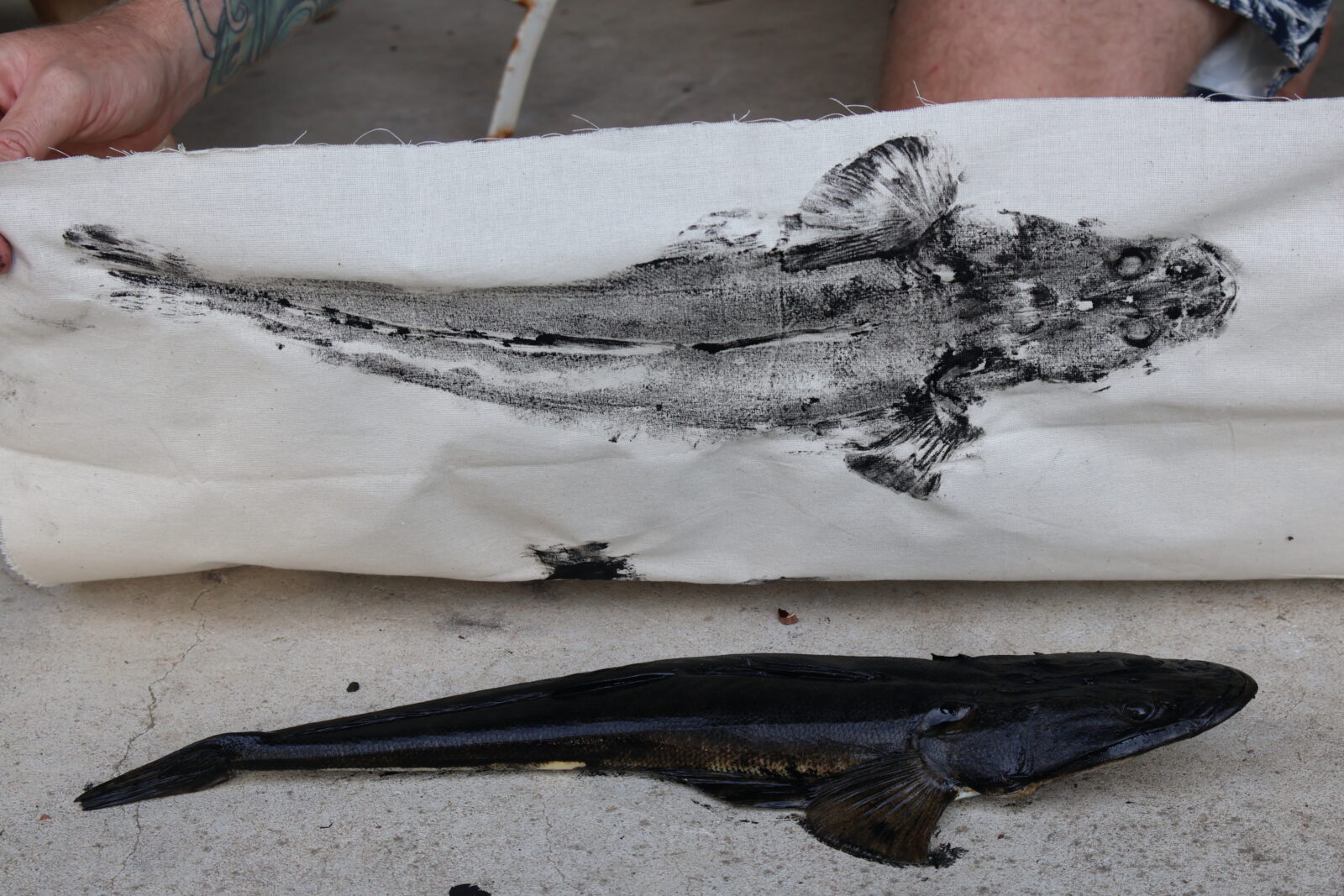
If you are interested in getting yourself a kit, or something that makes the perfect gift. Visit: www.holandjoe.com
The kit RRP is $89.95 and can be shipped around Australia.
P.S. The ink washed out from my clothes like it never happened.





